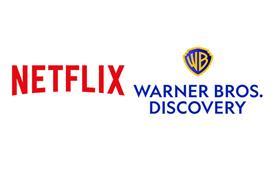3 00 has been happily rewriting the cinematic rulebook over the past three weeks. It has already broken box-office records in the US, with a $70m opening weekend, the highest for a March film and the third highest US opening for a film with an R-rating. Now the Spartans are conquering the international market, opening at number one in 33 territories and taking $241m worldwide in under three weeks.
Yet the film seems to tick none of the boxes for a hit. Today's blockbusters are generally expected to come from the same mould - generally a sequel, a remake or an adaptation of a bestseller, but not 300. There are no stars, it has an R-rating in the US, a green screen setting, not to mention comic-book roots and a level of violence that seems to be aimed at a relatively small demographic group.
The $300m question (and counting) is what went right and can it be replicated'
March of the 300
March is meant to be a quiet spot before Easter heralds the start of the mega-film summer. But Warner Bros managed to turn that handicap into an advantage, perhaps suggesting a future rethink for exhibitors.
The most obvious advantage for a March film is that there is less competition. The film opened on March 9 in the US against three independent releases - inspirational drama The Ultimate Gift, Korean fantasy flick The Host and US-Indian co-production The Namesake.
It also follows a period at the box office that has featured many of the quality dramas that have done well at the major awards. Wild Hogs ($123m) had already shown that audiences are open to a little contrast.
The potential for 300 around this time of year was suggested by a few previous releases. Miramax opened Miller's Sin City in April 2005 and took $29.1m in its first weekend, 127% more than fellow entry Beauty Shop.
Similarly, in April 2002, Universal released The Scorpion King in a quiet US box-office period and took $36m in its first weekend - its only other competitors being new entrants My Big Fat Greek Wedding and Space Station 3-D, which together barely crossed the $1m mark.
Warner Bros Pictures International president of distribution Veronika Kwan-Rubinek says the March/April window is a perfect time to release the film. "We particularly liked the spring corridor because it is a great time of year to own the market with an event movie rather than share it with so many other heavy hitters," she says.
"This is an added benefit for a film that does not have the same built-in awareness as so many of the big summer blockbusters this year. Plus, we have the benefit of the Easter and spring holidays."
International battleground
The appetite for loud, brash action has had the same impact in other markets, where 300 entered with a bang at a sleepier time. It opened at number one in Greece, Taiwan, Singapore, Malaysia and Taiwan on March 9 and generated $6.5m from the five territories that weekend across 337 screens, and marked the highest ever opening in Greece.
On March 16, it opened at number one in Korea and took $5m from 380 screens, taking 481% more than local entrant Big Bang.
Its expansion this past weekend showed more international interest as it opened at number one in all territories including the UK, Spain, Russia, France, Italy and Mexico.
Kwan-Rubinek says the studio exploited the buzz of the US launch to help build the film's status internationally. "Rather than opening day and date with the domestic launch, we followed several weeks later with our major markets, which gave us the added benefit of allowing the buzz to build."
Other past films that went on to achieve blockbuster status also used the March/April platform to capitalise on box-office return. Twentieth Century Fox released both instalments of Ice Age - arguably films that would slot well into the summer window - in the run-up to Easter.
Last year, Ice Age: The Meltdown generated $68m in its opening weekend in the US in a virtually empty field while the first instalment opened to $46.3m, 41% more than competitors Resident Evil and Showtime.
Genre bending
To generate the kind of numbers it has enjoyed, 300 has clearly been reaching beyond what may have seemed its core audience of young males, especially given the restrictions of the R rating.
300 is not your typical four-quadrant film, but then it does not easily fit into a clear genre. It could be defined as a comic-book adaptation or a sword-and-sandals epic, or a fantasy film.
The blend of genres has helped cast the net relatively wide. Internationally, for example, historical epics fare much better than in the US.
2004's Alexander is a case in point, generating 78% of its worldwide gross internationally - $34.3m in the US versus $124.8m internationally.Similarly, 2005's Troy took 72% of its worldwide gross at the international box office while Gladiator owed 59% to international audiences.
In contrast, the graphic novel adaptation has seen stronger performance in the US - Sin City took $74.1m in the US versus $77.2m internationally and last year's V For Vendetta generated $70.5m in box-office returns in the US and only $59.6m internationally.
But 300 combines the two genres to create an historical-epic-meets-advanced-CGI experience, sparking worldwide interest.
Milan-based exhibitor Domenico Dinoia says Italian audiences turned out for the epic appeal. "It's the first epic film since Alexander or Troy," says Dinoia. "So [Warner Bros] were able to use the hook into European culture of something we all studied in school to appeal to movie-goers."
300 producer and chairman and CEO of Atmosphere Entertainment Mark Canton describes the film as "the anti-epic", claiming it is "the new-fashioned way of making an epic movie", fusing artistry and emotion.
Worldwide audiences seem to have developed an appetite for fantasy battle scenes, particularly since the $2.9bn worldwide success of the Lord Of The Rings franchise.
The Mummy Returns, which also used computer-generated imagery for its battle scenes, generated a staggering $433m worldwide.
Similarly, historical battle scenes have attracted worldwide audiences since the sword-and-sandal feel of Gladiator, which took $187.6m in the US and $269m internationally. Alexander and Troy had sizable international success while Kingdom Of Heaven took $211.6m worldwide.
While 300 is a comic-book adaptation, the film has not been trapped in the comic-book ghetto like many of its predecessors. It uses its epic stance to attract a wider audience.
Unlike Sin City, which generated buzz from comic-book fanatics at an early stage, 300 has no dedicated fan base - the graphic novel was a one-off co-written by Frank Miller and Lynn Varley which debuted in December 1999.
Generation X-Box
The film seems to be reaching out to another growing demographic - the virtual gaming crowd with its fantastical posing and computer-generated imagery.
In April 2006, Warner Bros Interactive Entertainment even announced it was making a Playstation Portable game, 300: March To Glory, based on the film.
The games market is too often characterised as exclusive to a section of the male population, which tends to be summed up with the word geek.
But game playing has a much wider audience and 300 draws on gaming conventions in both narrative and style that will be familiar to a wide constituency.
Screen Digest says that while the retail gaming market is 70%-80% male-dominated, that is changing. Between 45%-50% of Nintendo DS portable game consoles (which are available in pink, for example) are purchased by women.
And even though early exit interviews show, unsurprisingly, that more men than women attended 300 in its first weekend, word of mouth is helping to get women into the theatres. The film may be inherently violent, but it also tells a story of love and sacrifice which will appeal to the female audience. There is a love story element, when King Leonidas leaves his queen, which aims to pull in more women as weeks go on.
Older and younger generations are also targeted, adds Kwan-Rubinek. She says the fusion of genres - historical epic and comic-book adaptation - targets a more widespread demographic.
She says: "(Historical epics) tend to appeal more to an older demographic but in the case of 300, we have the added benefit of the unique style which appeals strongly to a younger audience as well."
Budget blockbuster
The film looks and feels like a big blockbuster but most significant for the long term will be how it rewrites the rules of a big film. Notably, it was filmed with no big stars against green screen and with a $65m budget.
The potential of the technology will particularly excite interest. Back in 2004, UIP/Paramount's $70m Sky Captain And The World Of Tomorrow was heralded as a breakthrough in CGI as it was exclusively shot on green screen. But technical innovation was widely judged to have outstripped its artistic merit and it ended up grossing $57.8m worldwide.
Since then a number of films have tried similar digital imaging. Sin City fared better with this production method and took $158m worldwide on a $40m budget.
The long-term effect of the success of 300 could be further interest in this production method, showing films do not have to trek around the world on location to generate box-office return.
And 300 is also proving to be critic proof, like many big blockbuster successes. It has survived not only a critical backlash but almost certainly reaped the benefits. Iran's angry reaction to the portrayal of the Spartan's enemy (and Iranian ancestors) the Persians, shifted the film up the news agenda.
The film has also been labelled "fascist" and "homoerotic" but continues to get past purist critics while generating favourable internet buzz.
And with everyone talking about the how huge the summer of 2007 is going to be in terms of box office return, only time will tell if 300 has set a new benchmark for blockbuster success or if it was merely a one-off phenomenon.
Additional reporting by Sheri Jennings and Jeremy Kay.
The film's the star
Marketing 300 could have been another obstacle as it lacks the obvious star power of a typical blockbuster. Instead of playing up characters, Warner Bros flagged up blood and battle.
Trailers and movie posters play up the gore and boast an epic, visual experience.
Warner Bros Pictures International president of marketing Sue Kroll says the film's entire concept was the star, and the campaign was geared to highlight the production instead of characters.
"[300] is a genre-bending experience that is simultaneously epic, emotional, aggressive and cool," Kroll says.
"This is what inspired the entire marketing for the film. The campaign had to work to bring a lot of elements together that movie-goers hadn't experienced before in quite the same way - epic battles, a legendary story, mythology and fantastical creatures."
As a result, Warner Bros launched an aggressive internet campaign internationally, with more than 25 localised websites. It was a multi-phased campaign that launched early - the official 300 website hit cyberspace in December 2005 - and targeted young online opinion makers, containing exclusive content that specifically appealed to that audience.
Sites later expanded to the broader consumer base and hit more mainstream movie-goers.
In January 2007, the studio launched a MySpace page for the film, which offered members a feature upgrade - users could increase the amount of pictures stored on their profile from 12 to 300 if they downloaded the film's trailer to their personal page, a viral promotional tool for the internet community bandwagon.
Additionally, 300 harnessed virtual online community Second Life and conducted an online junket and exhibition in the 3-D virtual world.
On March 16, a live Q&A was conducted with the film's director Zack Snyder, creator Frank Miller and stars Gerard Butler, Lena Headey and Rodrigo Santoro.
Working alongside creative marketing agency Picture Production Company, Warner Bros also launched the month-long 300 Movie Expo within Second Life, an interactive exhibit whereby any of Second Life's 4.6 million users can view images and frames from the film in addition to listening to the film's soundtrack.
300 Opening Weekends
US - $70.8m - March 9 (3,103 screens)
UK - $9.3m - March 22 (369 sites)
South Korea - $5m - March 16 (380 scrs)
Italy - $4.5m - March 23 (459 scrs)
Mexico - $2.5m - March 23 (526 scrs)
Spain - $6.3m - March 23 (432 scrs)
France - $5.6m - March 21 (485 scrs)
Russia - $5.6m - March 23 (432 scrs)
Hong Kong - $1m - March 15 (37 scrs)
Greece - $3.1m - March 9 (138 scrs)



















No comments yet